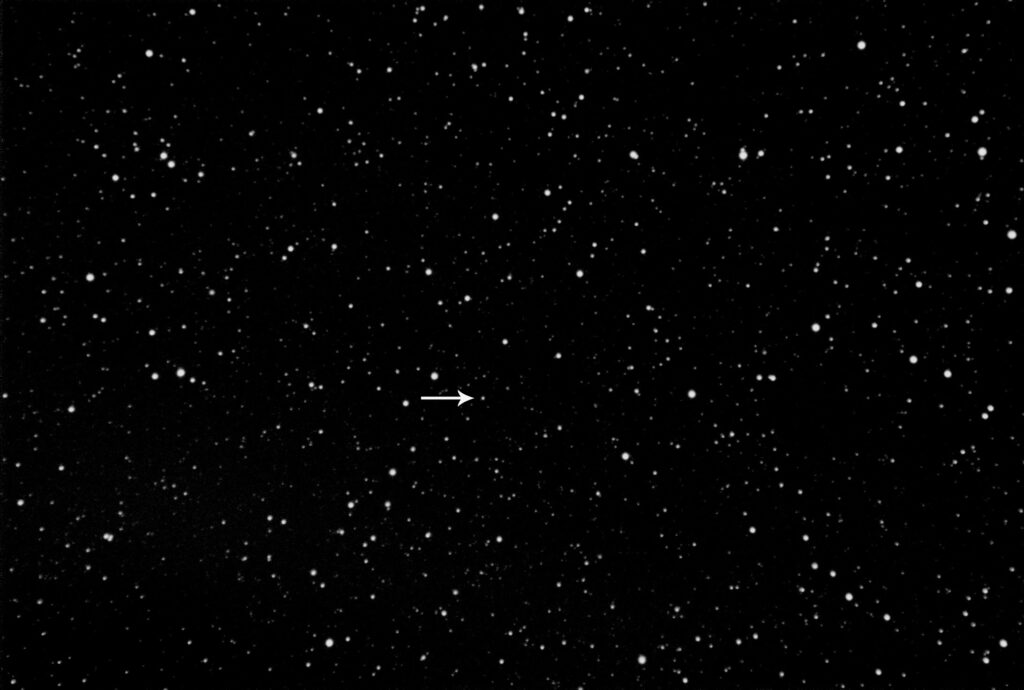Nearly a century ago, 15-year-old Kansas farm boy Clyde Tombaugh read an article on building telescopes in a Sunday School quarterly. Using the crankshaft from a 1910 Buick and a mirror that he had fabricated himself, he soon built his first telescope and began observing the heavens.
Soon after graduating from high school he was offered a position at the Lowell Observatory in Arizona, and it was there, a few years later (at the age of 24), that this high school graduate became the third person in human history to discover a planet!
Through meticulous examination of several photographic plates he detected Pluto. He became an international sensation. Two years later he enrolled as a freshman at the University of Kansas, and began taking his first courses in astronomy. Following his graduation, he pursued a distinguished career as a professional astronomer. He passed away in 1997. Some of his ashes are aboard the unmanned New Horizons spaceship launched by NASA in 2006, and heading for Pluto.
On August 24, 2006, in the final session of the 26th General Assembly of the International Astronomical Union, following a sometimes emotional and rancorous debate by the few members still present, Pluto was removed from the official list of planets. A series of resolutions were passed that inartfully define the term "classical planet" as "a celestial body that (a) is in orbit around the Sun, (b) has sufficient mass for its self-gravity to overcome rigid body forces so that it assumes a hydrostatic equilibrium (nearly round) shape, and (c) has cleared the neighborhood around its orbit." This definition is problematic for a number of reasons, most notably it rules out any planets orbiting other stars, and, if interpreted literally, would exclude many of the current planets that have not substantially cleared their orbits (Jupiter's orbit has tens of thousands of asteroids).
The delegates also passed a resolution defining the new term "dwarf planet" as a celestial body that (a) is in orbit around the Sun, (b) has a nearly round shape, (c) has not cleared the neighborhood around its orbit, and (d) is not a satellite.
A third resolution classifies all other objects orbiting the Sun as "small solar system bodies". Under these new definitions, the "classical planets" will be Mercury, Venus, Earth, Mars, Jupiter, Saturn, Uranus, and Neptune.
Note that Pluto was bumped from the list because it has not "cleared the neighborhood around its orbit" (its orbit intersects that of Neptune). It is now a dwarf planet. This is not the first time that a “planet” was removed from the official list. In 1801 the asteroid Ceres (with a diameter of 600 miles, and orbiting the Sun between Mars and Jupiter) was discovered and was soon designated a planet. And so it remained for half a century until being demoted to an asteroid.
Our Moon, and every other satellite in the solar system, are neither planets nor dwarf planets under the new definitions even though our Moon has six times the mass of Pluto and two satellites (Ganymede and Titan) are larger than the planet Mercury. The above image is a star field that shows the planet Pluto in its 248-year sojourn around the Sun. It was a planet for 75 years.
Clyde Tombaugh went to his grave believing that he was the third person in human history to have discovered a planet. His 93-year-old widow was informed on 2006 that Pluto had been demoted. She was dismayed, but said that her husband would have understood.


Thank you, not only for sharing your photograph of Pluto, but also the great story behind it! I chuckled out loud when I read about the demoting of planet to asteroid in the paragraph on planets being removed from the official list. It fascinates me how man wrestles with and attempts to unlock and classify the wonder and mystery of God’s creation. Everyone stops and stands amazed. I am convinced it is what we were created to do!